Petrozavodsk
| Petrozavodsk (English) Петрозаво́дск (Russian) Petroskoi (Karelian and Finnish) |
|
|---|---|
| — Inhabited locality — | |
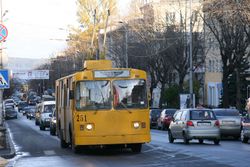 Trolleybus in Petrozavodsk |
|
.svg.png) Location of the Republic of Karelia in Russia |
|
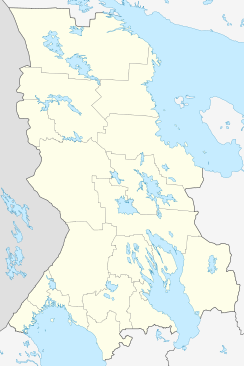 Petrozavodsk
|
|
| Coordinates: | |
.png) |
.png) |
| Holiday | Last Saturday of June |
| Administrative status | |
| Country | Russia |
| Federal subject | Republic of Karelia |
| Capital of | Republic of Karelia |
| Administrative center of | Prionezhsky District |
| Municipal status | |
| Urban okrug | Petrozavodsk Urban Okrug |
| Head | Nikolay Levin |
| Representative body | City Council |
| Statistics | |
| Area | 135 km2 (52 sq mi) |
| Population (2002 Census) | 266,160 inhabitants[1] |
| - Rank | 70th |
| - Density | 1,972 /km2 (5,110 /sq mi)[2] |
| Time zone | MSK/MSD (UTC+3/+4) |
| Founded | 1703 |
| Previous names | Petrovskaya Sloboda (until 1777), Petrozavodsk (until 1941), Äänislinna (until 1944) |
| Postal code(s) | 185xxx |
| Dialing code(s) | +7 8142 |
| [Site Official website] | |
Petrozavodsk (Russian: Петрозаво́дск; Karelian/Vepsian/Finnish: Petroskoi or Äänislinna) is the capital of the Republic of Karelia, Russia, with a population of 266,160 (2002 Census). It stretches along the western shore of the Lake Onega for some 27 kilometers. The city is served by Besovets Airport. Municipally, it is incorporated as Petrozavodsk Urban Okrug (Russian: Петрозаво́дский городско́й о́круг, Petrozavodsky gorodskoy okrug, Karelian: Petroskoin linnupiiri).
Contents |
History

The city was founded on 11 September 1703 as Petrovskaya Sloboda by Prince Menshikov at the behest of Peter the Great who needed a new iron foundry for manufacturing cannons and anchors for the Baltic Fleet at the time of the Great Northern War. At first the foundry was named Shuysky zavod (literally, "factory at the Shuya River"), but a decade later its name was changed to Petrovsky zavod, after the reigning monarch. From this form the present name of the city derives.
By 1717, Petrovskaya Sloboda had grown into the largest settlement in Karelia, with about 3500 inhabitants, a timber fort, a covered market, and miniature palaces of the Tsar and Menshikov. The town's best known landmark was the wooden church of Sts. Peter and Paul, rebuilt in 1772 and renovated in 1789. The church retained its original iconostasis until this relic of Peter's reign was destroyed by fire on 30 October 1924.
After Peter's death, Petrovskaya Sloboda depopulated and the factory declined. It was closed down in 1734, although foreign industrialists maintained copper factories in the vicinity.
The industry was revived in 1773, when Catherine the Great established a new iron foundry upstream the Lososinka River. Designed to provide cannons for the ongoing Russo-Turkish Wars, the foundry was named Alexandrovsky, after Alexander Nevsky, who was considered a patron saint of the region. The factory was modernised and expanded under supervision of Charles Gascoigne in 1787-96. Local pundits claim that the first railway in the world (чугунный колесопровод) was inaugurated for industrial uses of the Alexandrovsky foundry in 1788.
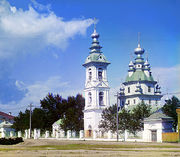
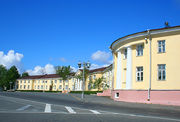
During Catherine's municipal reform of 1777, Petrovskaya Sloboda was incorporated as a town, whereupon its name was changed to Petrozavodsk. A new Neoclassical city centre was then built, focused on the newly-planned Round Square. In 1784 Petrozavodsk was large enough to supplant Olonets as the administrative centre of the region. Although Emperor Paul abolished the Olonets Governorate, it was revived as a separate guberniya in 1801, with Petrozavodsk as its centre.
During the Finnish occupation of East Karelia in the Continuation War (1941–1944), the occupier chose to style the city Äänislinna (or Ääneslinna), rather than the traditional Petroskoi. The new name was a literal translation of Onegaborg, the name of a settlement marked on a 16th century map by Abraham Ortelius near the present-day city, Ääninen being the Finnish toponym for Lake Onega.
The city was occupied by Finnish troops for nearly three years before it was retaken by Soviet forces on June 28, 1944. Before leaving the town the Finnish troops provided the inhabitants with a week's ration of food; a unique deed in military history.
Landmarks
Petrozavodsk is distinguished among other towns of North Russia by its Neoclassical architectural heritage, which includes the Round Square (1775, reconstructed in 1789 and 1839) and the Alexander Nevsky Cathedral (consecrated in 1832). Among the town's landmarks are the outdoor statues of Peter I (bronze and granite, Ippolit Monighetti, 1873) and Gavrila Derzhavin (a Russian poet who was the governor of Olonets in the 18th century).
The city has a fine frontage on the Gulf of Petrozavodsk. The modern embankment, inaugurated in 1994, displays an assortment of Karelian granites and marbles. It is lined with extravagant postmodernist sculptures presented by sister cities of Petrozavodsk from around the world. There is also a birch copse, where the first church of Petrozavodsk was built in 1703.
Petrozavodsk is home to the Karelia Philharmonic Orchestra (1933)[2], the Karelian Musical Theatre (1955, statuary by Sergei Konenkov), National Library of Karelia (1959), Finnish-speaking National Theatre of Karelia (1965), Petrozavodsk State University, a conservatory, a city museum founded in 1871, and a branch of the Russian Academy of Sciences.
Neighbourhood
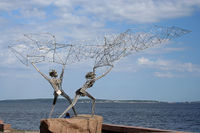
The village of Shoksha near Petrozavodsk contains a quarry of red and pink limestone which was used in construction of Saint Isaac's Cathedral and Lenin Mausoleum, among many other notable structures.
The suburb of Martsialnye Vody is the oldest spa in Russia, founded by Peter I in 1714 and visited by the Tsar on four occasions. Its name means "The Waters of Mars" in Russian. Although Peter's palace at Martsialnye Vody has not survived, there is a museum devoted to the spa's history.
From Petrozavodsk harbor a hydrofoil service carries people to the island of Kizhi, a World Heritage Site with an outdoor museum of ancient wooden architecture.
Climate
Petrozavodsk experiences a subarctic climate (Köppen climate classification Dfc) that is greatly moderated by the oceanic influence of the Baltic Sea. Winters are long and cold, though very mild for the high latitude, while summers are short and warm. Precipitation averages 581mm annually.
| Climate data for Petrozavodsk | |||||||||||||
|---|---|---|---|---|---|---|---|---|---|---|---|---|---|
| Month | Jan | Feb | Mar | Apr | May | Jun | Jul | Aug | Sep | Oct | Nov | Dec | Year |
| Record high °C (°F) | 5.4 (41.7) |
7.3 (45.1) |
15.5 (59.9) |
24.2 (75.6) |
29.6 (85.3) |
31.9 (89.4) |
33.5 (92.3) |
31.9 (89.4) |
28.5 (83.3) |
21.3 (70.3) |
11.1 (52) |
9.4 (48.9) |
33.5 (92.3) |
| Average high °C (°F) | -6.9 (19.6) |
-6.0 (21.2) |
-0.4 (31.3) |
5.7 (42.3) |
13.3 (55.9) |
18.6 (65.5) |
21.0 (69.8) |
18.2 (64.8) |
12.5 (54.5) |
5.8 (42.4) |
-0.7 (30.7) |
-4.3 (24.3) |
6.4 (43.5) |
| Daily mean °C (°F) | -9.9 (14.2) |
-9.1 (15.6) |
-3.8 (25.2) |
1.7 (35.1) |
8.3 (46.9) |
13.8 (56.8) |
16.4 (61.5) |
14.0 (57.2) |
8.8 (47.8) |
3.2 (37.8) |
-2.9 (26.8) |
-7.1 (19.2) |
2.8 (37) |
| Average low °C (°F) | -13.3 (8.1) |
-12.3 (9.9) |
-7.1 (19.2) |
-2.1 (28.2) |
3.5 (38.3) |
9.1 (48.4) |
11.8 (53.2) |
10.2 (50.4) |
5.5 (41.9) |
0.7 (33.3) |
-5.4 (22.3) |
-10.1 (13.8) |
-0.8 (30.6) |
| Record low °C (°F) | -41.6 (-42.9) |
-39.3 (-38.7) |
-30.0 (-22) |
-19.3 (-2.7) |
-9.8 (14.4) |
-2.6 (27.3) |
-0.1 (31.8) |
-1.7 (28.9) |
-5.0 (23) |
-13.4 (7.9) |
-27.5 (-17.5) |
-36.8 (-34.2) |
-41.6 (-42.9) |
| Precipitation mm (inches) | 32 (1.26) |
24 (0.94) |
30 (1.18) |
33 (1.3) |
42 (1.65) |
62 (2.44) |
69 (2.72) |
81 (3.19) |
61 (2.4) |
56 (2.2) |
49 (1.93) |
42 (1.65) |
581 (22.87) |
| Source: Погода и Климат (Weather and Climate)[3] | |||||||||||||
People from Petrozavodsk
- Vladimir Dratchev, biathlete
- Denis Zubko , footballer
Twin towns — Sister cities
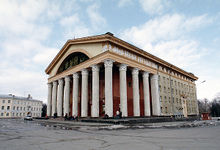
Petrozavodsk is twinned with:
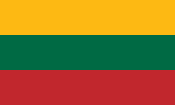 Alytus, Lithuania
Alytus, Lithuania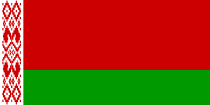 Brest, Belarus
Brest, Belarus Duluth, USA
Duluth, USA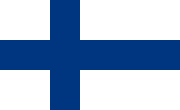 Joensuu, Finland
Joensuu, Finland La Rochelle, France, since 1973[4]
La Rochelle, France, since 1973[4] Neustrelitz, Germany
Neustrelitz, Germany Neubrandenburg, Germany
Neubrandenburg, Germany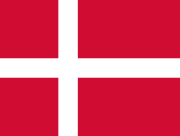 Nyborg, Denmark
Nyborg, Denmark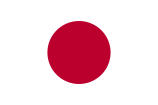 Ōhara, Japan
Ōhara, Japan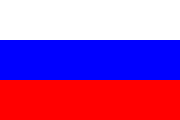 Podolsk, Russia
Podolsk, Russia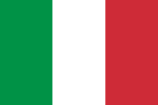 Portomaggiore, Italy
Portomaggiore, Italy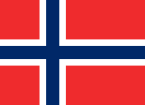 Mo i Rana, Norway.[5]
Mo i Rana, Norway.[5] Tübingen, Germany
Tübingen, Germany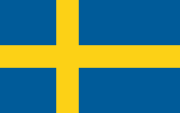 Umeå, Sweden
Umeå, Sweden Varkaus, Finland
Varkaus, Finland

References
- Notes
- ↑ Федеральная служба государственной статистики (Federal State Statistics Service) (2004-05-21). "Численность населения России, субъектов Российской Федерации в составе федеральных округов, районов, городских поселений, сельских населённых пунктов – районных центров и сельских населённых пунктов с населением 3 тысячи и более человек (Population of Russia, its federal districts, federal subjects, districts, urban localities, rural localities—administrative centers, and rural localities with population of over 3,000)" (in Russian). Всероссийская перепись населения 2002 года (All-Russia Population Census of 2002). Federal State Statistics Service. http://perepis2002.ru/ct/html/TOM_01_04_1.htm. Retrieved 2009-08-19.
- ↑ The value of density was calculated automatically by dividing the 2002 Census population by the area specified in the infobox. Please note that this value may not be accurate as the area specified in the infobox does not necessarily correspond to the area of the entity proper or is reported for the same year as the Census (2002).
- ↑ Погода и Климат (Weather and Climate)—[1]. Retrieved 15 August 2010.
- ↑ "La Rochelle: Twin towns". www.ville-larochelle.fr. http://www.ville-larochelle.fr/en/decouvrir-la-ville/villes-jumelles.html. Retrieved 2009-11-07.
- ↑ Petrozavodsk City Administration. Official Web site
External links
 Media related to Petrozavodsk at Wikimedia Commons
Media related to Petrozavodsk at Wikimedia Commons- Official site of administration (English) (Russian)
- Culture Board of Petrozavodsk
- Petrozavodsk Online
- Detailed map of Petrozavodsk and vast organizations database(Russian)
- Kizhi Museum in the City of Petrozavodsk (English) (Russian)
|
|||||
|
|||||||||||||||||